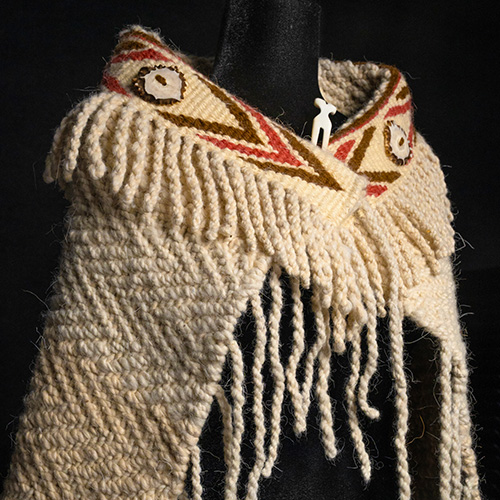Imagine discovering that the rock you’ve been using as a doorstop is a dinosaur egg. Or the corroded metal object you unearthed in your Puget Sound backyard is from a Zulu spear. Sound far-fetched? Not to the experts at the Burke Museum, who have seen their fair share of surprises since they began hosting Artifact ID Day nearly 30 years ago.
The annual event, offered this year on May 9 (1 - 3 pm), is an opportunity for the public to bring items to the museum and learn more about them from the Burke’s research and collection staff. Each year visitors bring everything from family heirlooms to mysterious objects dug up in their yards.

“It’s always a lot of fun,” says Robin Wright, curator of Native American art, professor of art history, and director of the Bill Holm Center for the Study of Northwest Coast Art. Wright has participated in every Artifact ID Day since the event was introduced in 1986. “I like to see the mystery items, and occasionally there are a few great masterpieces that come in. The most challenging part is trying to identify things that you have no clue about, but the fun part is then having several experts weighing in. We often learn a lot from the other curators.”
Up to 20 Burke curators and collection managers volunteer on Artifact ID Day, with expertise on everything from stone tools to fossils to Native American baskets. Often they can identify an object based on the material, the carving technique, the shape, or the location where it was found or acquired. But some artifacts leave the experts stumped.

“Every year there are objects we can’t identify,” says Laura Phillips, archaeology collections manager. “In those cases we take a photograph of the object, gather any information from the owner about how it was acquired, and have one of our graduate students do background research to try to figure it out. There’s always follow up.”
Some artifacts offer new insights, especially when they are unearthed in local backyards. “When people bring in things they found in their yard, it gives us a better sense of the archaeology of the area,” Phillips explains. “Sometimes we’ll ask them to point to their location on a map. By keeping track of all those locations over time, we get a better sense of what was really going on. Development is happening so fast around here that we worry about losing cultural heritage.”
The most challenging part is trying to identify things that you have no clue about, but the fun part is then having several experts weighing in.
In addition to archaeological finds, visitors arrive with jewelry, scrimshaw, sperm whale teeth, textiles, and more. Collectors as young as three years old have brought in mineral collections or objects they found on the beach, including shells, deer bones, and stone tools.
Discoveries can be exhilarating—or disappointing. A doorstop might turn out to be a dinosaur egg, or just an oddly shaped rock. While the potential for treasure may bring to mind PBS’s Antiques Roadshow, there is an essential difference. “We don’t do appraisals,” says Andrea Godinez, public relations and marketing manager at the Burke. “We also don’t authenticate things in order for people to sell them. Our role is to help people learn more about the objects that matter to them.”
For Godinez, a highlight of the event is the interactions among visitors as they wait to meet with the experts. “You’ll see someone with a really big spear, and then another person with a little tiny basket, and then another with a gemstone,” she says. “They all start talking with each other and sharing their stories, and they’re excited to hear what other people have found out. It’s a really fun time.”

In past years, visitors might have seen their neighbors holding a jade sculpture, or a violin made of red cedar in the Makah style, or a drinking cup formed from a walrus’s tusk. Or that puzzling Zulu spear, dug up in a local backyard. Phillips and her colleagues posit that the spear was purchased in the late 1800s, when Zulu artifacts were popular in the Northwest. “How it got into the ground I don’t know,” says Phillips. “Maybe a child took it out of the house and buried it.”
Just one more Artifact ID Day mystery. The experts look forward to tackling more mysteries—and identifying more intriguing artifacts—at this year’s event.
Artifact ID Day will be on May 9 from 1 to 3 pm. The event is included in museum admission and free for Burke members or with UW ID. For more information, visit burkemuseum.org.
More Stories

A Healing Heart Returns
In February, the UW Symphony will perform a symphony that Coast Salish elder Vi Hilbert commissioned years ago to heal the world after the heartbreak of 9/11. The symphony was first performed by the Seattle Symphony in 2006.

Coast Salish Traditions are "Woven in Wool" at the Burke
A Burke Museum exhibit, co-curated by Coast Salish weavers and Burke curators, highlights the importance of weaving to Coast Salish communities.

Demystifying Quantum
In a physics course for non-STEM majors, Professor Miguel Morales teaches quantum mechanics without the advanced mathematics most quantum courses require.